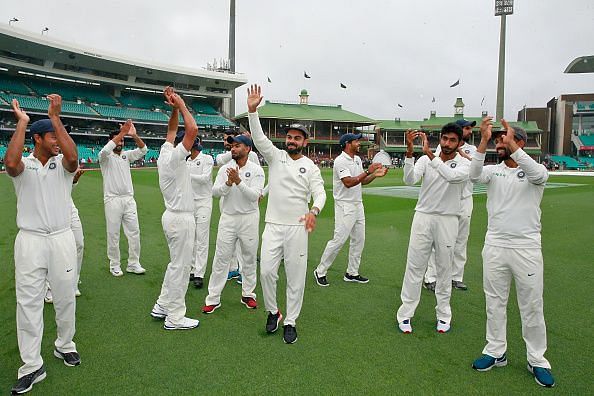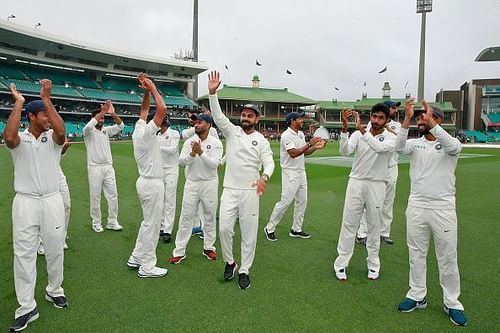
Opinion: Indian Test Team Finds Its Balance In Australia

Kohli’s squad went to Australia with a lot of promise but no results to back their potential. A series victory eluded them in England and in South Africa in 2018. However, history was created at the end of a pleasantly surprising ‘not controversial’ Australian tour, as India won its first Test series Down Under.
Mr. Shastri being Mr. Shastri said a lot of flattering words at the press conference as a coach and praised the young Indian squad for performing like champions. Champions is a word that was associated with the Indian players when they played in friendly, home conditions but not during hostile away tours. India’s 2-1 series win has changed that, at least momentarily. Apart from the shining Border-Gavaskar trophy, the Indian team will also bring back a lot of ‘balance’ with them.
Never has the Kohli-led Indian team look more balanced than now. It has been a culmination of the hard work put in by the players, support staff, management, and domestic cricket set-up, which has resulted in fitter and finer players.
Yes, the mighty Aussies were a bit meeker because of the absence of Smith and Warner. However, the Indian side also had its share of setbacks in the form of injuries faced by Prithvi Shaw and Ashwin. Ishant Sharma and Rohit Sharma were out of the last Test. Hardik Pandya was ruled out of the tour with his back injury. So, injuries plagued both the teams before and during the series.
While India’s bowling looked competitive – and even superior on some days – in South Africa and England, it was the batting that was letting them down, constantly. Problems with the openers were persistent and the hallowed middle order wasn’t living up to its reputation. The rest of the batting line-up hadn’t evolved into a lower-middle order, as it was still referred to as a long tail.
Dhawan-Vijay-Rahul trio was given a long rope during the overseas tours, but the experienced trio failed to deliver the goods. While Kohli continued to gallop towards batting supremacy, Rahane and Pujara looked like shadows of their brilliant selves. India needed someone like England’s allrounder, Sam Curran, to spring life into the lower-middle order. Landing in Australia, the bowling unit looked confident to pick twenty wickets in a game but the performance of the batting unit was doubtful.
Destiny opened its doors for the opener, Mayank Agarwal; the doors on which he had been knocking for almost a year by scoring heaps of runs in the Ranji Trophy. Hanuma Vihari displayed his solidarity in England and established it in Australia. And like a fresh breeze, Rishabh Pant grew from strength to strength and turned into a storm that blew away the Aussies’ chance of leveling the series in the final Test. Jadeja did what Sam Curran did, something India missed dearly missed in England and ensured that India's lower order doesn't only have tailenders.
The key to the balance is India’s batting spine, number 3, 4, and 5: Pujara, Kohli, Rahane. This experienced trio led by Pujara not only scored big but batted time. India's middle-order drained the Australian bowlers mentally and physically by occupying the crease for a long time. Bumrah, Shami, and Ishant made sure there are no big partnerships from the Australian batsmen. Ashwin, Jadeja, and Kuldeep spun a web when fast bowlers were tired.
The ‘baby sitter’, Rishabh Pant’s scores have signaled his arrival as a successor to Dhoni, the wicket-keeper batsmen. With a fitter Pandya, Ashwin, Ishant, the ever-reliable Bhuvaneshwar Kumar and young Prithvi Shaw at the top, this Indian team looks balanced and ready to launch itself to new heights.
Well done, Kohli & Co.